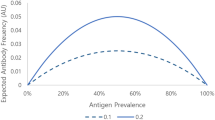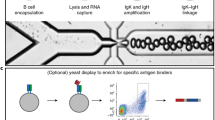Abstract
THE blood group antigen Mia was discovered by Levine, Stock, Kuhmichel and Bronikovsky1 in 1951. Anti-Mia, the antibody necessary for the identification of the antigen, was made by a mother in response to immunization by her Mi(a +) fœtus which, as a result, had severe hæmolytic disease. The antigen was shown to be inherited as a dominant character. The antigen was evidently rare, for no example was found in testing 425 random people.
This is a preview of subscription content, access via your institution
Access options
Subscribe to this journal
Receive 51 print issues and online access
$199.00 per year
only $3.90 per issue
Buy this article
- Purchase on SpringerLink
- Instant access to full article PDF
Prices may be subject to local taxes which are calculated during checkout
Similar content being viewed by others
References
Levine, P., Stock, A. H., Kuhmichel, A. B., and Bronikovsky, N., Proc. Soc. Exp. Biol., N.Y., 77, 402 (1951).
v. d. Hart, Mia, Bosman, Hélène, and van Loghem, J. J., Vox Sanguinis, 4, 108 (1954).
Levine, P., Robinson, E. A., Layrisse, M., Arends, T., and Sisco, R. D., Nature, 177, 40 (1956).
Author information
Authors and Affiliations
Rights and permissions
About this article
Cite this article
WALLACE, J., MILNE, G., MOHN, J. et al. Blood Group Antigens Mia and Vw and their Relation to the MNSs System. Nature 179, 478 (1957). https://doi.org/10.1038/179478a0
Issue date:
DOI: https://doi.org/10.1038/179478a0



